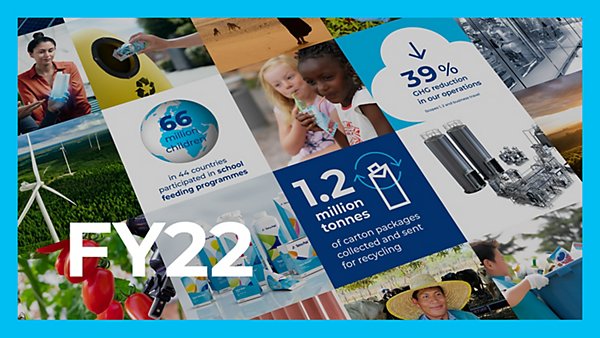The challenge
We acknowledge that the packaging industry has a role in driving climate change action. Global food systems account for more than one-third of global greenhouse gas (GHG) emissions1 and are key to tackling the climate crisis.
With an expanding population, the demand for food is rising fast. But increasing food production has the risk of putting more pressure on limited resources like land, water and energy – impacting nature and warming the planet even more1. That is why the food industry needs to urgently step up to this challenge and reduce its environmental impact at every step of the food value chain.
How we can contribute
Reducing emissions of raw materials
We work with suppliers to identify opportunities to reduce carbon emissions in their operations and throughout their own supply chains. Different raw materials have varying environmental footprints, therefore increasing the share of paperboard and replacing fossil-based plastics with plant-based plastics in our packages is an important way to lower the climate impact. Our supplier initiative “Join us in protecting the planet" covering more than 90% of our base material suppliers, aims to reduce the emissions of these suppliers by 50% by 2030 compared to 2019.
Decarbonising our own operations
We are committed to reaching net-zero GHG emissions in our own operations (scopes 1, 2 and business travel) by 2030 and we are on track with a 36% reduction compared to our 2019 baseline. Our own operations directly represent only 1% of our value chain GHG emissions.
Learn more about our approach to decarbonisation
Decarbonising our portfolio
Since the launch of our package with plant-based polymers, we have steadily increased the use of plant-based plastics over fossil-based plastics, which contributes to an even lower carbon footprint of our packaging2. Continuing this development, we sold 17.6 billion packages and 10.8 billion caps made with plant-based plastic in 2021, resulting in 96 kilotonnes of CO2 saved compared to the CO2 that would have been emitted using fossil-based plastic3. Our ambition is to develop the world’s most sustainable food package – a carton made solely of responsibly sourced renewable or recycled materials that are fully recyclable and carbon neutral4.
Working with customers
Through continuous innovation in more efficient packaging and processing solutions, we aim to help our customers reduce their climate footprint and make food production more efficient – from renewable, responsibly sourced carton packages to processing technologies and services that reduce water, energy and waste.
Explore our solutions for sustainable business transformation
Accelerating recycling
We collaborate with governments, civil organisations and private companies to improve collection, sorting and recycling capacity. Our investments in this area support progress towards a circular economy5 and contribute to keeping valuable materials in use.
Read more about Circularity & Recycling














